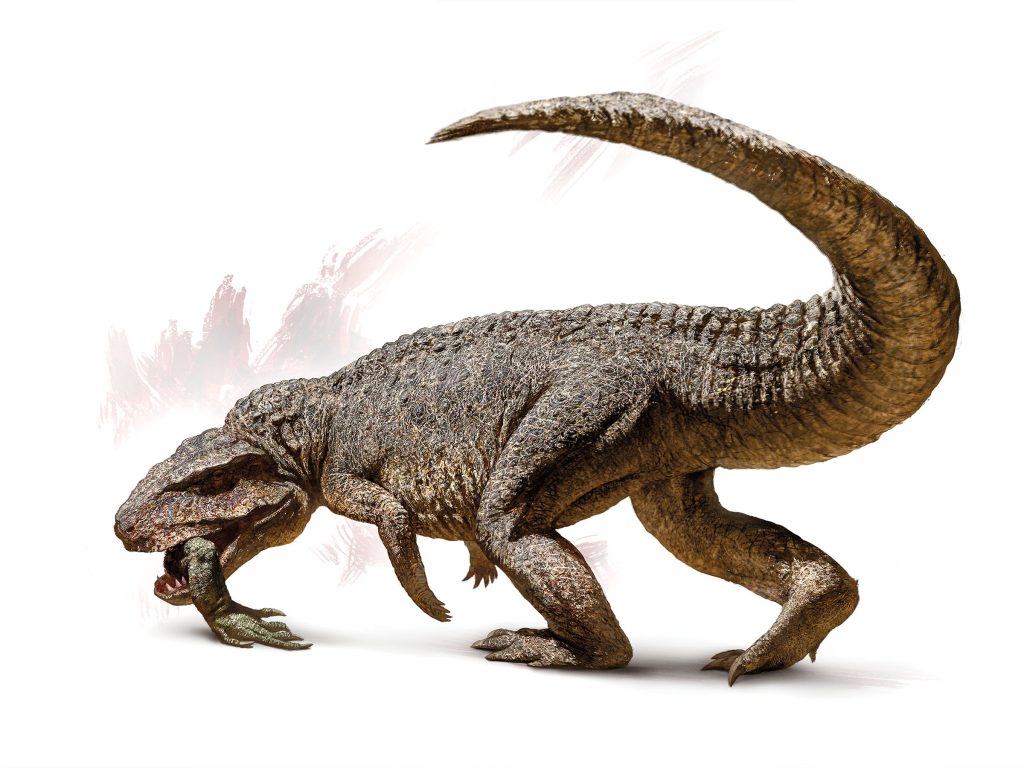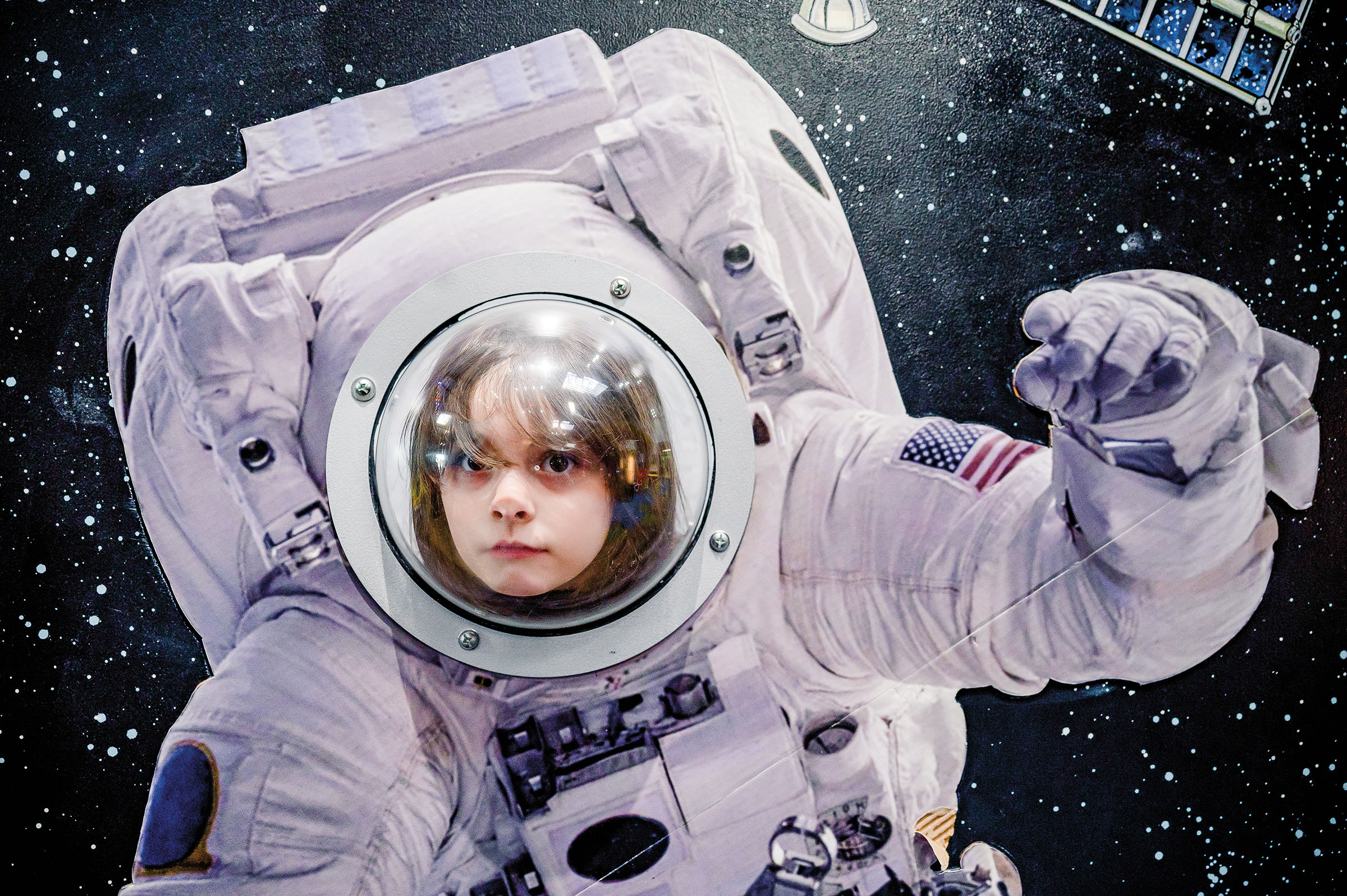
Kids can become astronauts for the day at the Discovery Science Place in East Texas.
In the early 1990s, Nancy Wrenn drove her minivan around Tyler with the back seats pulled out to accommodate a 3D mock-up on a large plywood platform of what would eventually become the Discovery Science Place. The model demonstrated a vision for a place where children in the East Texas city could gain hands-on experience in the areas of science and math. This was more than 15 years before the Perot Museum of Nature and Science became a North Texas institution and nearly a decade before the STEM (science, technology, engineering, and mathematics) curriculum was introduced on a national level. Wrenn took the prototype and her sales pitch to business owners and community leaders to secure funding for the building.
Discovery
Science Place
308 N. Broadway Ave., Tyler.
903-533-8011;
discovery
scienceplace.org
A social worker at the time who focused on children’s education to combat poverty and crime, Wrenn had volunteered, among others, to carry out the vision set forth by Junior League of Tyler members Penny Patterson, Diane Tutt, and Marsha Harrison. They were concerned about students in the U.S. lagging behind their global counterparts in science test scores.
“If we didn’t feed the minds of children, we’d be feeding the bodies and intervening in the crises forever. We could create a place that could ignite imagination, impact literacy, inspire curiosity, boost critical thinking, and enhance school curriculum,” Wrenn remembers telling prospective donors.
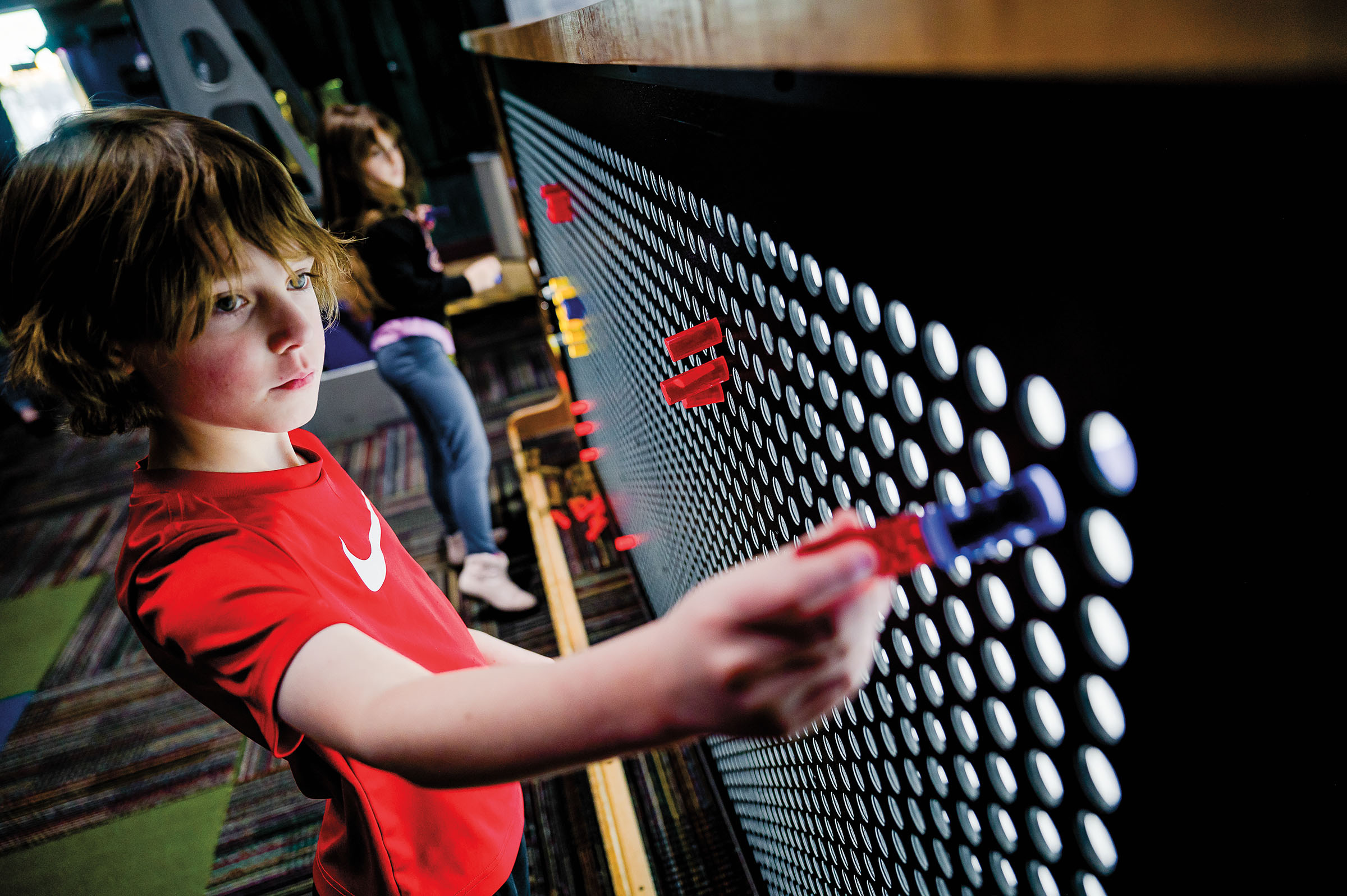
A large wall mimicking a Lite-Brite allows children to create their own illuminated artwork.
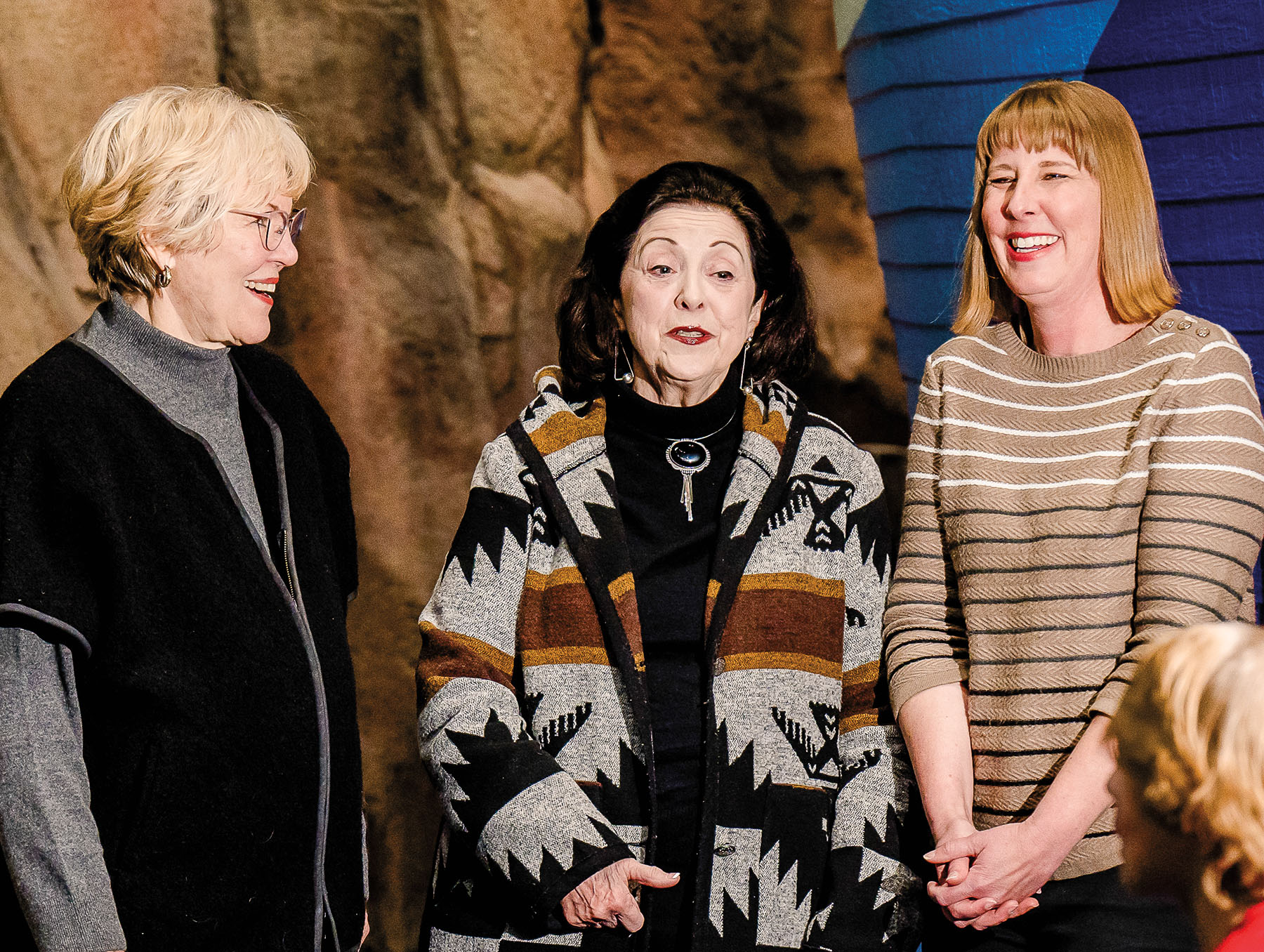
Volunteers Nancy Wrenn and Joyce Buford and Discovery Science Place executive director Carol Whiteside
The women decided to do something about it and traveled around the country to check out exhibits available for rent. The first exhibit that came to Tyler was Kaleidoscope, created by Hallmark in 1991. The traveling exhibit was selected because it gave children the freedom to explore art and create their own, instilling in them a sense of accomplishment.
The success of Kaleidoscope inspired the Junior League to establish a permanent site, hence the mock-up. Eventually, volunteer Ann Primer scored a deal with the Holley family, who gifted a 26,000-square-foot building where they once operated the Holley Motor Company car dealership. Then the Caldwell Zoo donated $100,000 toward renovations. Though the Junior League remained a supporter, an independent nonprofit was formed for the education center. On Sept. 18, 1993, the Discovery Science Place opened with the traveling exhibit Dinamation Dinosaurs, featuring animatronic prehistoric giants.
STEM Is in Session
At Don Harrington Discovery Center, children can sit in construction equipment and scoop up items or crawl through a maze that gives facts about the world of ants.
1200 Streit Drive, Amarillo. 806-355-9547;
discoverycentercollective.org
The Sci-Tech Discovery Center has live science presentations daily, along with a ball roller coaster building, a studio, and a giant nose that shows how humans sneeze.
8004 Dallas Parkway, Frisco. 469-896-2188;
mindstretchingfun.org
At Thinkery, kids can manipulate shadows and colors in the Light Lab then practice engineering at the Simple Machines Wall in the Innovators’ Workshop.
1830 Simond Ave., Austin. 512-469-6201;
thinkeryaustin.org
Volunteers and Junior Leaguers began building permanent exhibits by hand. Patterson crafted a smoke and mirrors demonstration in her garage. Taking inspiration from the Children’s Museum in Brooklyn, Tutt and her father, Joe Bassham, created a faux beach with imported sand, lounge chairs, and touchable sea creatures to give landlocked kids the opportunity to experience the coast for the first time. The Discovery Science Place’s downtown location made it accessible for kids from all walks of life. “Like many cities, we were divided,” Wrenn says. The Junior Leaguers knew there were families that needed the center both in the north and the south, and a central location would solve that.
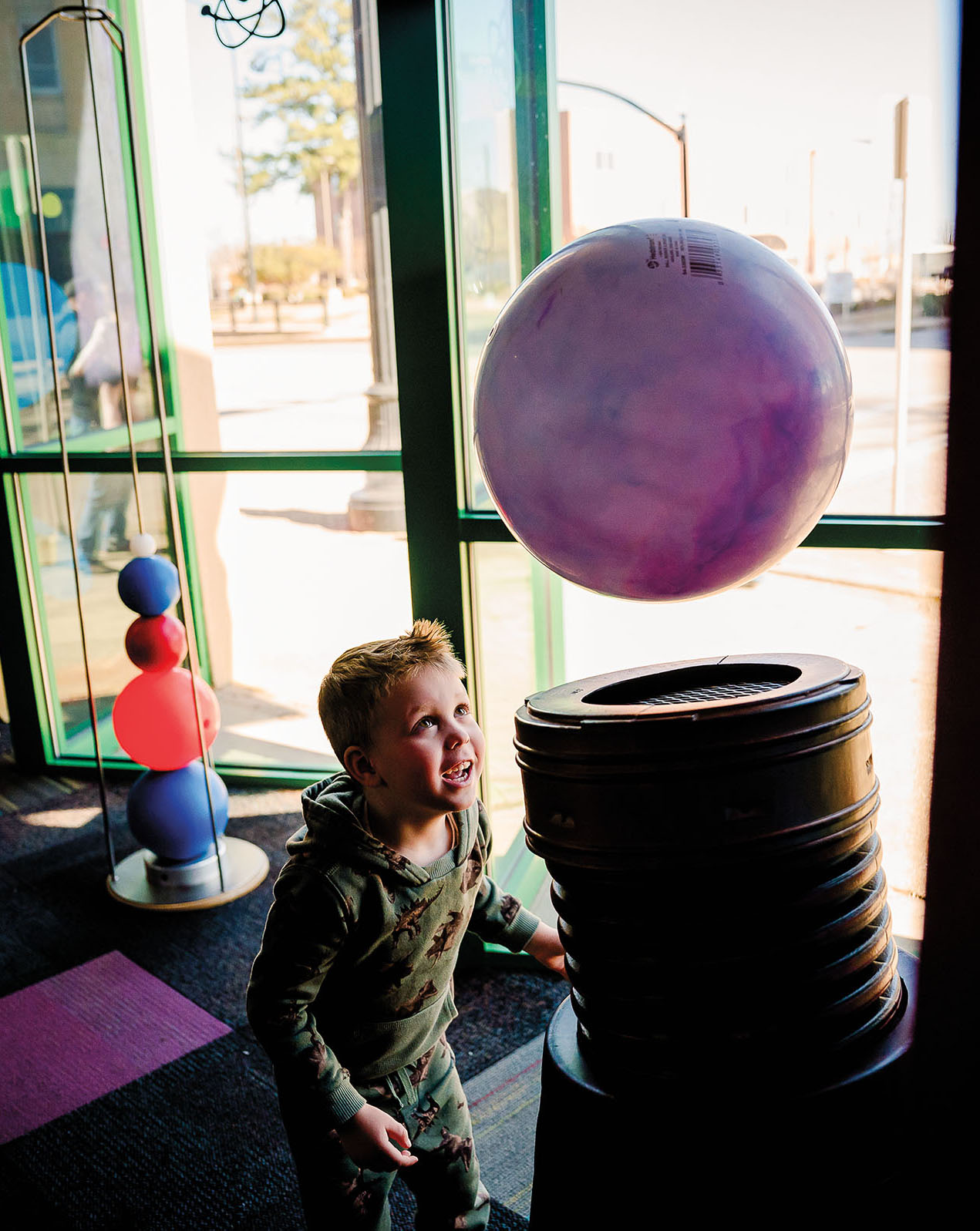
Experiencing levitation, force, and gravity
Before the center had been open a full week, 15,000 kids from East Texas had signed up to visit. Flash forward to the 12 months between the fall of 2022 and 2023, and 70,000 visitors were logged. Four of the six “Founding Mothers,” including Wrenn and Patterson, were in attendance when the museum celebrated its 30th anniversary last spring. “They didn’t call us that back then,” Wrenn says. “They called us the crazy people who were bent on immersive science education.”
My 6-year-old daughter, Helen, 5-year-old son, Andrew, and I enter an interactive space that showcases aspects of science in Texas dating back millions of years. We’re greeted with a large wooden ship where kids can climb onto the bow and move a crane to hear different sounds of the Gulf of Mexico. As children make their way back down and into a cave nearby, they stumble upon a foam pit where they can uncover dinosaur fossils such as a replica skull of a Lambeosaurus. Once they head farther into the caves, an earthquake simulator makes the ground move slightly, mimicking the West Texas phenomena. Helen closes her eyes as she experiences the feel of an earthquake. “I love that we can touch everything and not get in trouble,” she says.
Elsewhere, the Orion exhibit shines a light on space. A mock-up of a crew module demonstrates how astronauts lie down for hours as they blast into orbit. Tyler is in the path of totality during the solar eclipse this April, so the museum is celebrating with items on loan from NASA through June 30. The exhibit features information on how astronauts live, eat, and work on the International Space Station. Kids can also complete engineering challenges in a new NASA building zone.
Since the Discovery Science Place has a small staff and a budget dependent on donations, community support is integral to its success. A local plumbing company, Rub-A-Dub, was at the museum recently to repair sewer pipes and saw an opportunity to give back to a place where their employees’ own kids play. They told the director they wanted to set up a duck race under the large ship with yellow rubber toys that each child can take home—a project now in the works. Educators and students from local colleges give their talents to the cause as well. The University of Texas at Tyler and STEM Club at Tyler Junior College assist with and offer input on exhibits at the center.
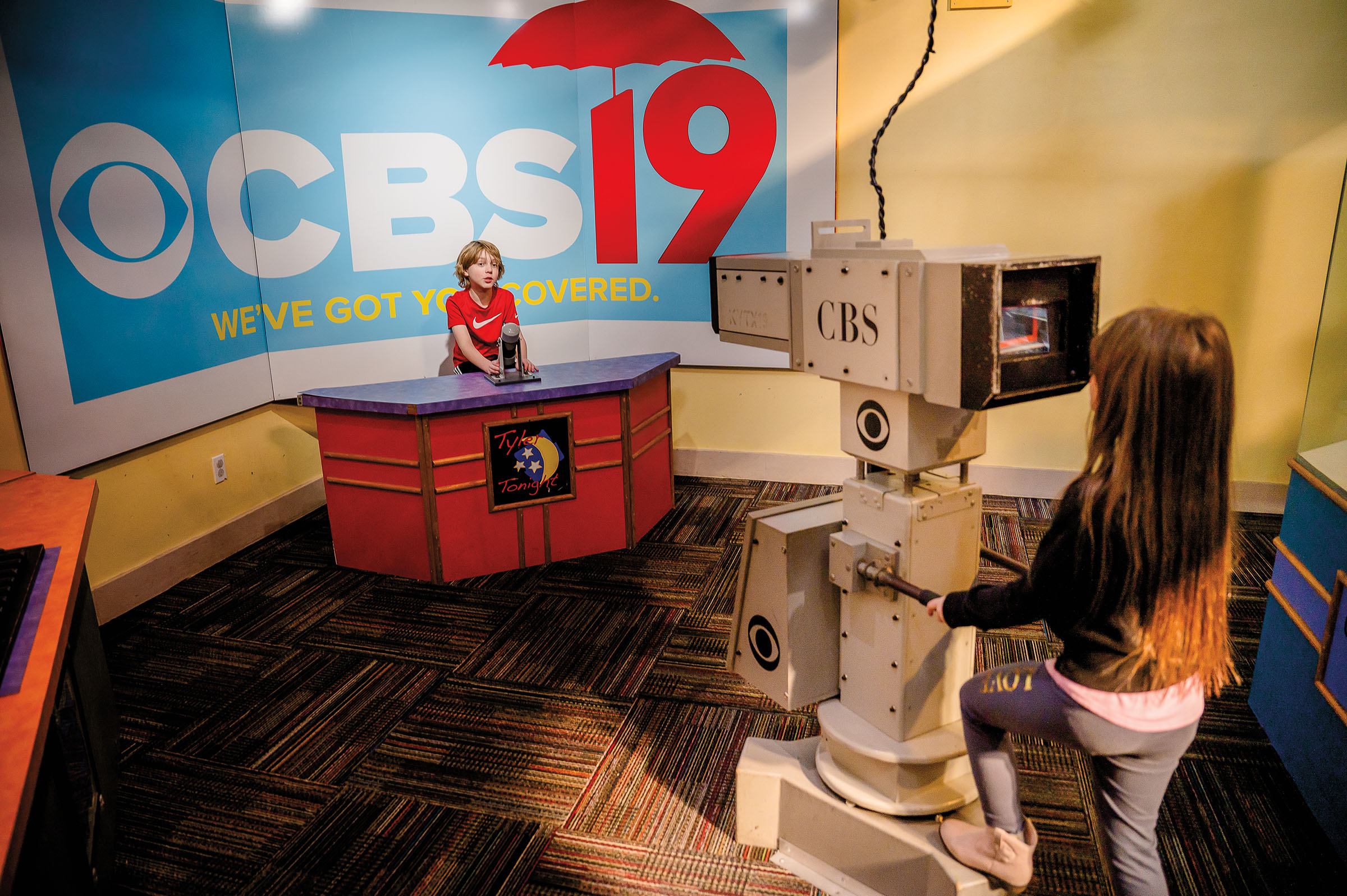
Role-playing on a mock TV set
There are also several exhibits sponsored by local businesses. Southside Bank recently updated a model of the inside of a bank, with computers, fake money, and a vault. The museum staff installed drive-thru tubes that use air to suck up handkerchiefs designed to look like dollar bills. Andrew and others watch intently as the cloth flies across the ceiling to an exit hole on the other side of the bank—a look at how it was done before digital banking.
As members of the Tyler business community have stepped up, the Founding Mothers have taken a step back, albeit reluctantly. “You feel like you give birth to a project. We worked really hard 30 years ago to get everyone on board and gain the funding,” Patterson says. “The hardest thing is to let it go.”
Decades have passed and the women are all in their 70s now. The kids they bring to the Discovery Science Place these days are their grandbabies. “What we had in our hearts back then, we see in their eyes now,” Patterson says.



